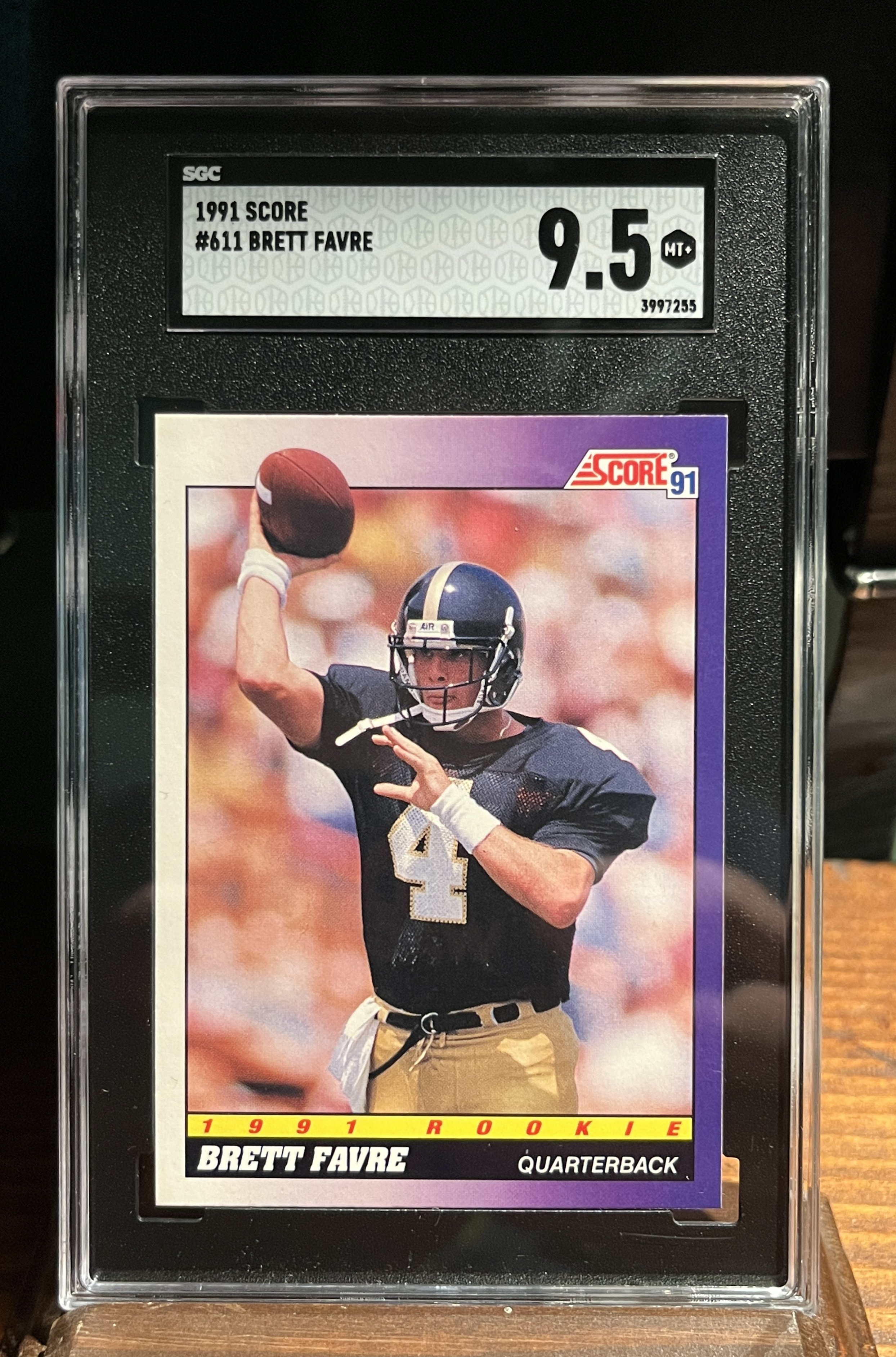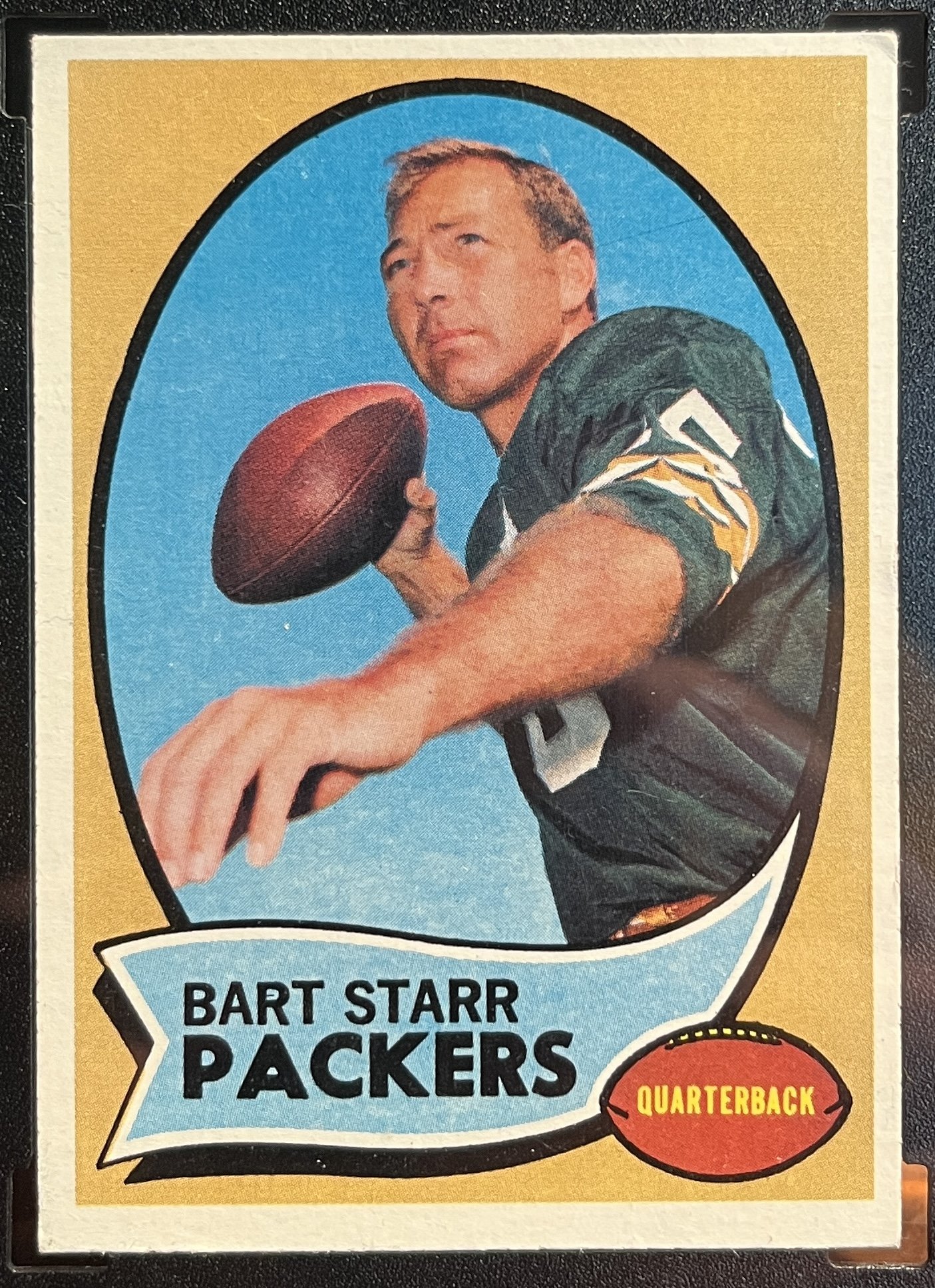 Image 1 of 3
Image 1 of 3

 Image 2 of 3
Image 2 of 3

 Image 3 of 3
Image 3 of 3




SOLD - 1991 Brett Favre #611 ROOKIE CARD
SGC 9.5: #3997255 - Mint+
Brett Favre faced several struggles early in his career before establishing himself as one of the greatest quarterbacks in NFL history. Favre's early years in the NFL were marked by inconsistency. He joined the Atlanta Falcons in 1991 as a backup quarterback and struggled to find his rhythm when given the opportunity to play. He threw more interceptions than touchdowns and often displayed erratic decision-making. These early performances led to doubts about his ability to succeed at the professional level. He also dealt with injuries and setbacks early in his career. In his second season with the Falcons, he suffered a serious thumb injury that required surgery. This affected his playing time and hindered his development. Additionally, off-field issues and personal challenges, including substance abuse, added to the difficulties he faced during this period. Favre initially struggled with adapting to the complexities of NFL defenses and the speed of the game. He often forced throws into coverage, resulting in interceptions. Additionally, his confidence wavered at times, leading to self-doubt and hesitancy on the field. Overcoming these challenges required growth and experience. In 1992, Favre was traded to the Green Bay Packers. This trade provided him with a fresh start and an opportunity to prove himself in a new environment. Under the guidance of head coach Mike Holmgren, Favre received valuable mentorship and coaching that helped shape his career.
SGC 9.5: #3997255 - Mint+
Brett Favre faced several struggles early in his career before establishing himself as one of the greatest quarterbacks in NFL history. Favre's early years in the NFL were marked by inconsistency. He joined the Atlanta Falcons in 1991 as a backup quarterback and struggled to find his rhythm when given the opportunity to play. He threw more interceptions than touchdowns and often displayed erratic decision-making. These early performances led to doubts about his ability to succeed at the professional level. He also dealt with injuries and setbacks early in his career. In his second season with the Falcons, he suffered a serious thumb injury that required surgery. This affected his playing time and hindered his development. Additionally, off-field issues and personal challenges, including substance abuse, added to the difficulties he faced during this period. Favre initially struggled with adapting to the complexities of NFL defenses and the speed of the game. He often forced throws into coverage, resulting in interceptions. Additionally, his confidence wavered at times, leading to self-doubt and hesitancy on the field. Overcoming these challenges required growth and experience. In 1992, Favre was traded to the Green Bay Packers. This trade provided him with a fresh start and an opportunity to prove himself in a new environment. Under the guidance of head coach Mike Holmgren, Favre received valuable mentorship and coaching that helped shape his career.
SGC 9.5: #3997255 - Mint+
Brett Favre faced several struggles early in his career before establishing himself as one of the greatest quarterbacks in NFL history. Favre's early years in the NFL were marked by inconsistency. He joined the Atlanta Falcons in 1991 as a backup quarterback and struggled to find his rhythm when given the opportunity to play. He threw more interceptions than touchdowns and often displayed erratic decision-making. These early performances led to doubts about his ability to succeed at the professional level. He also dealt with injuries and setbacks early in his career. In his second season with the Falcons, he suffered a serious thumb injury that required surgery. This affected his playing time and hindered his development. Additionally, off-field issues and personal challenges, including substance abuse, added to the difficulties he faced during this period. Favre initially struggled with adapting to the complexities of NFL defenses and the speed of the game. He often forced throws into coverage, resulting in interceptions. Additionally, his confidence wavered at times, leading to self-doubt and hesitancy on the field. Overcoming these challenges required growth and experience. In 1992, Favre was traded to the Green Bay Packers. This trade provided him with a fresh start and an opportunity to prove himself in a new environment. Under the guidance of head coach Mike Holmgren, Favre received valuable mentorship and coaching that helped shape his career.
















